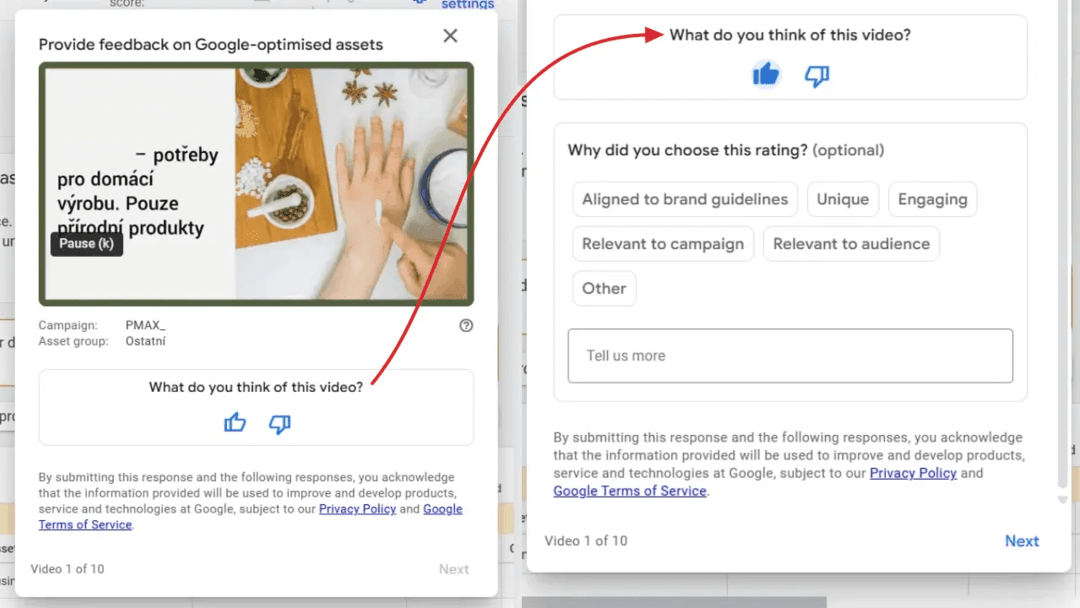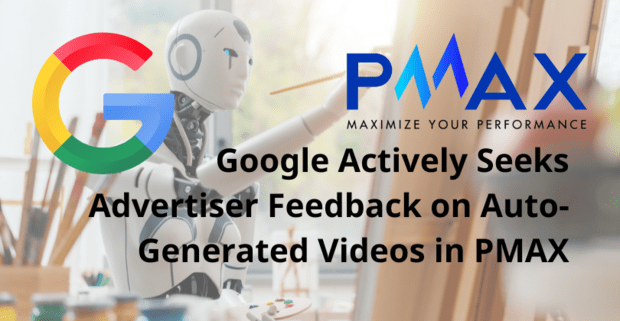What's Happening
Inside Performance Max campaigns, when Google auto-creates video assets using existing headlines, descriptions, and images, some advertisers are now seeing a feedback prompt alongside the video preview.
The message:
"What do you think of this video?"
An actual example shows a paused video with Czech-language text referencing home production and original products — while a simple form invites users to submit their thoughts.

Why This Matters
PMAX has been a black box for many advertisers, especially when it comes to creative control. If you don't upload your own video assets, Google automatically builds them using its machine learning — often resulting in awkward, off-brand, or downright embarrassing creative.
-
No brand consistency?
-
Questionable messaging?
-
Strange visuals?
-
Welcome to PMAX auto-generated videos.
This new feedback form suggests Google is trying to fine-tune its asset generation based on real advertiser input — instead of relying solely on its AI guesses.
Google Taking Concerns Seriously (Maybe)
Advertisers have been complaining for months about how little control they have over PMAX creatives, especially videos. Google's move to solicit feedback signals they may be preparing improvements — or at least want to manage growing advertiser frustration.
The Bottom Line for Advertisers
-
Google acknowledges the auto-video problem.
-
PMAX remains heavily automated — human input is still limited.
-
Submit feedback — but don't expect instant fixes.
-
Whenever possible, upload your own high-quality video assets to maintain brand control.
Performance Max remains a powerful but risky tool for media buyers. Automation can scale your reach, but at the cost of creative precision — and your reputation if bad assets go live.




